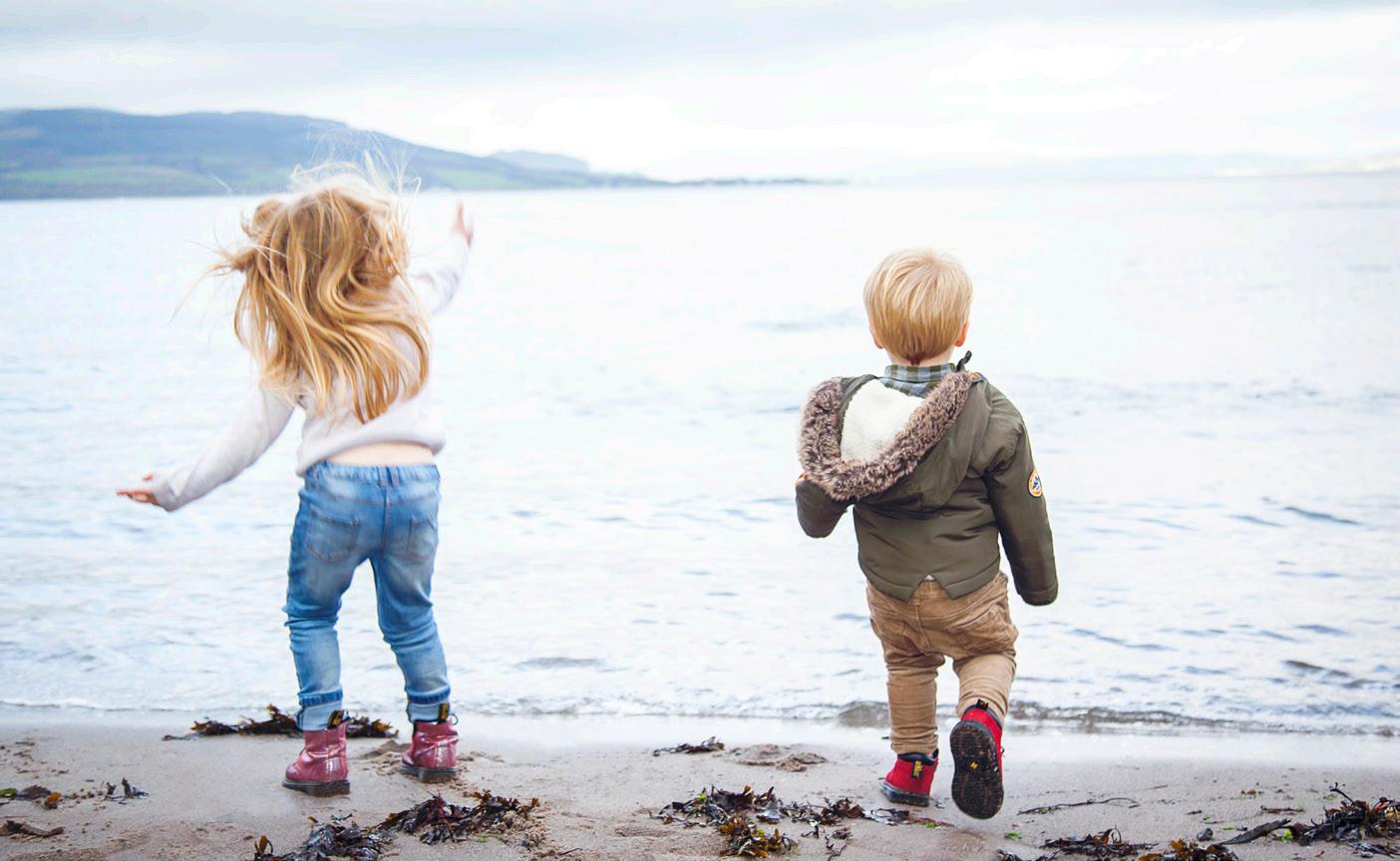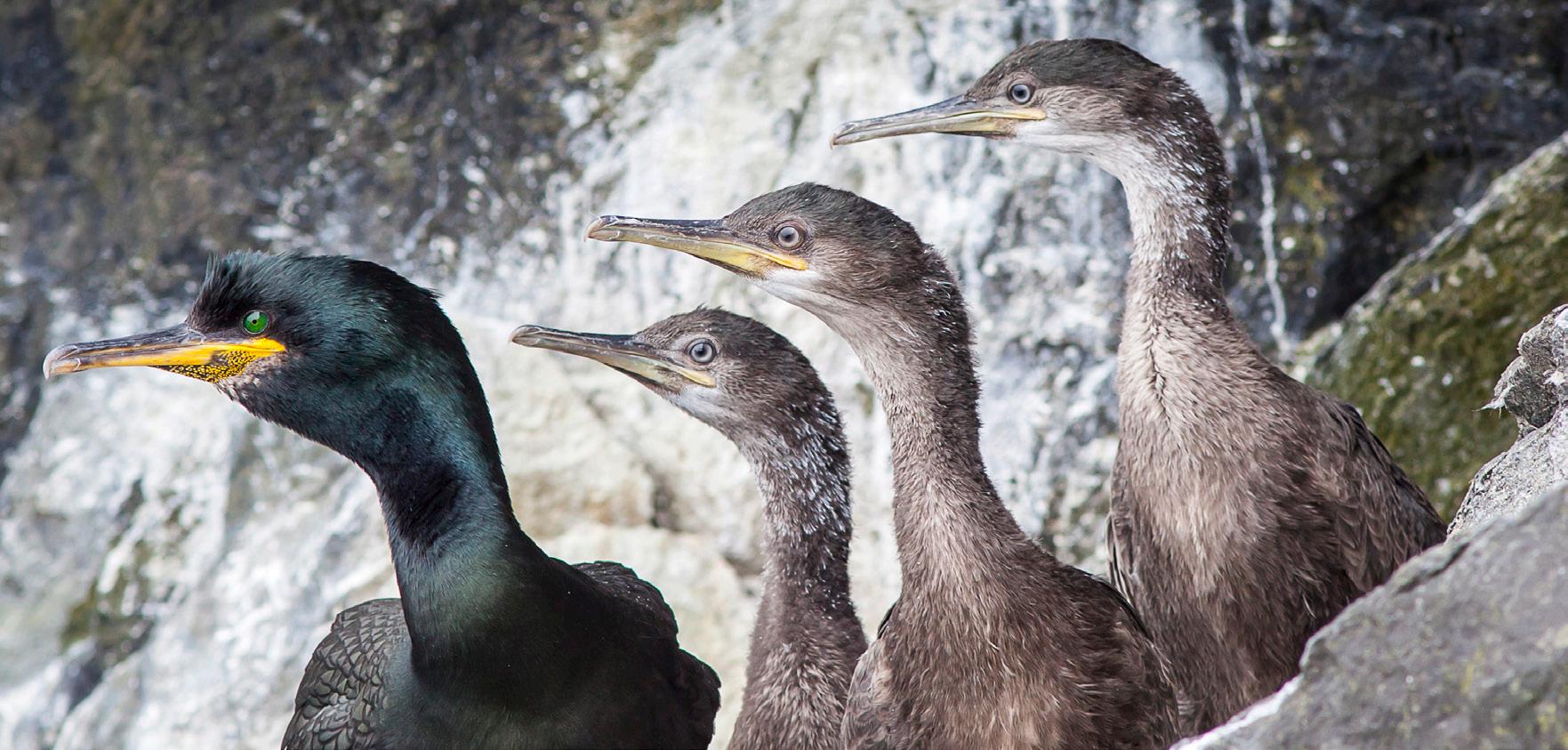
4 minute read
Wildlife for Kids
where the
WILD THINGS
Never work with children or animals, they say. But holiday with them? Jo Laidlaw explores some ways introducing small children to nature and wildlife can make a coastal holiday memorable
The isles of the west have always been a popular destination for family escapes. While each Scottish island has its own unique identity, many of them feature the things that make most family holiday wish-lists: stunning beaches, room to run and the chance for the whole family to get back to nature.
On an island break, immersing yourself in the flora and fauna can start from the moment you board the ferry. Some ferry sailings in summer come with an ORCA Wildlife Officer on deck, who can help spot and identify all sorts of sea and air creatures. But even without their expert help you’ll see plenty of birds – and you certainly won’t be the first canny grown-up to keep a cranky wee one diverted by keeping a look-out for something larger breaking the waves: a seal, dolphin, porpoise or even a whale.
The adventures continue on land with the daddy of all the beasties – dinosaurs. (Extinct they may be, but they very much live on in the hearts and minds of most small children.) Skye is home to Scotland’s dinosaur coast. It’s still very much a ‘live’ site, as the recent discovery of what are thought to be new stegosaurus prints around Bothers’ Point shows. Head for Staffin or Duntulm at low tide for the best chance of standing in the footprints of these prehistoric monsters: they’re tricky to find, but that’s half the fun, and if you run out of time or energy the engaging museum at Staffin can point you in the right direction. Visit after some wild weather and you may even make a discovery of your own – but note that removing fossils or prints is strictly prohibited.
Birds are the dinos’ closest living relatives and there are plenty of them to see as the islands’ skies and shores teem with ducks, divers,
WILD THINGS are

cormorants and curlews, to name but a few. Head to Mull, which is home to a population of golden eagles as well as the stunning white tailed (or sea) eagle, an incredible conservation success story. While still rare, these huge birds do tend to stick to a familiar habitat, so with a little bit of luck and local intel, there’s a reasonable chance of spotting one. Mull Eagle Watch is based out of Craignure Golf Club (around a mile from the ferry terminal) and runs from April to September. It’s a great source of information as well as guided walks.
For rainy days, try Mull Aquarium in Tobermory which is Europe’s first ever catch and release aquarium. That means the sea creatures on display are collected by local divers and fishermen, hanging out at the aquarium for a maximum of four weeks before being released back into the sea, so there’s always something different to see with less of an impact on the fish or wider environment. As with all these attractions, phone ahead just to check their opening times and other arrangements.
If your children don’t quite have the patience required for spotting the big birds, the RSPB Scotland reserve at Balranald in North Uist has pushchair-friendly trails, a play area and an outdoor ´ cafe in the summer. Depending when you visit, you may see corncrakes, plovers, terns and skuas – and possibly one of the white tailed eagles too. While on North Uist, the Langass Woodland is a fun wee jaunt. A community wood planted to aid biodiversity, it’s home to the Hercules the Bear Trail, as well as a life-size statue commemorating the iconic TV bear’s great escape back in the 1980s, when he went on the run while filming a TV commercial on the island, roaming free for 24 days. Beaches are probably going to be a big part of your holiday, so if you fancy getting a slightly different view of those sparkling sands and crystal waters, then the Uist Community Riding School
(based in Benbecula) might be just the ticket. It offers family ride-outs for all abilities (over the age of four), with plenty of cute ponies to pet.
You’ll find boats offering whale and dolphin spotting trips all over the islands, but if enclosed spaces and prolonged periods of horizon-scanning aren’t quite the right mix for your kids, just grab a net and a bucket and head to the shore. You can’t beat rockpooling and crabbing – pro tip, use bacon for bait – and simply messing about in the shallow waves. Chat to the local fishermen about their catch, count the flowers in the machair and relish the simple pleasures in this most special of places. n










